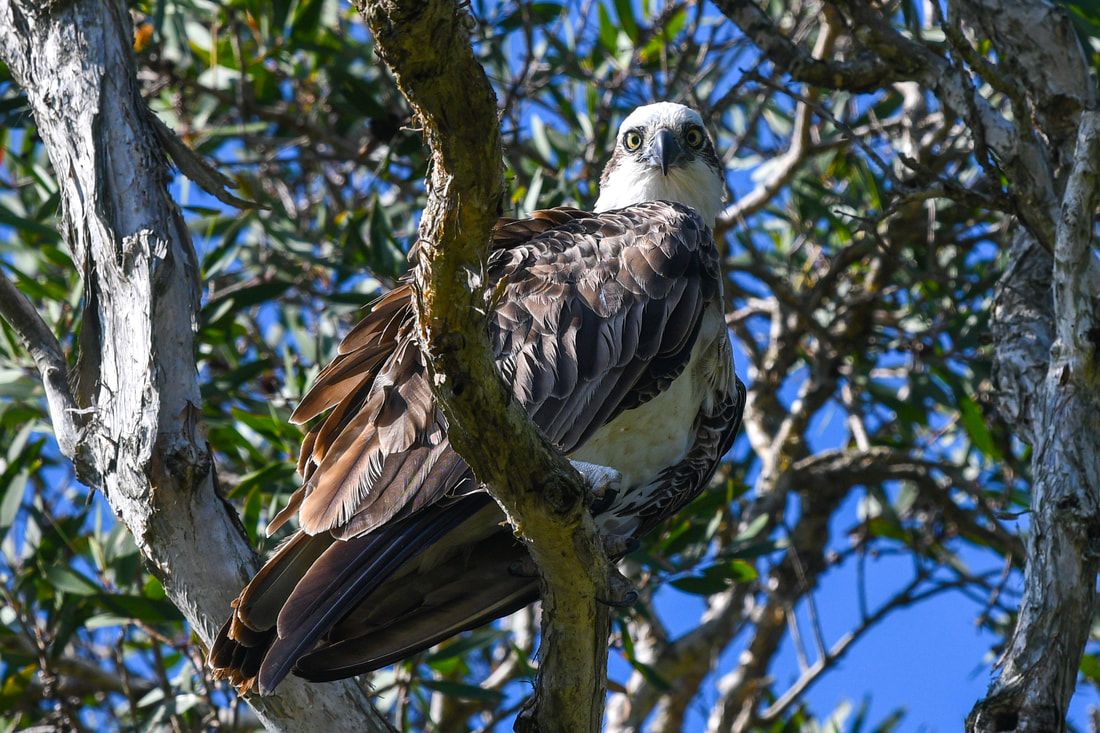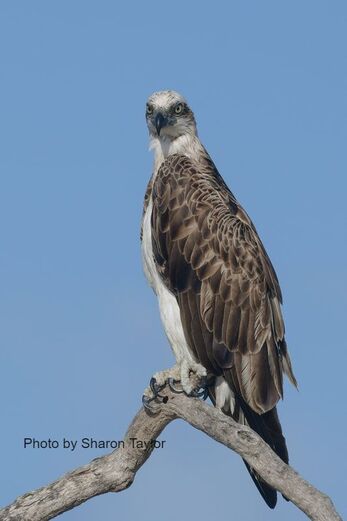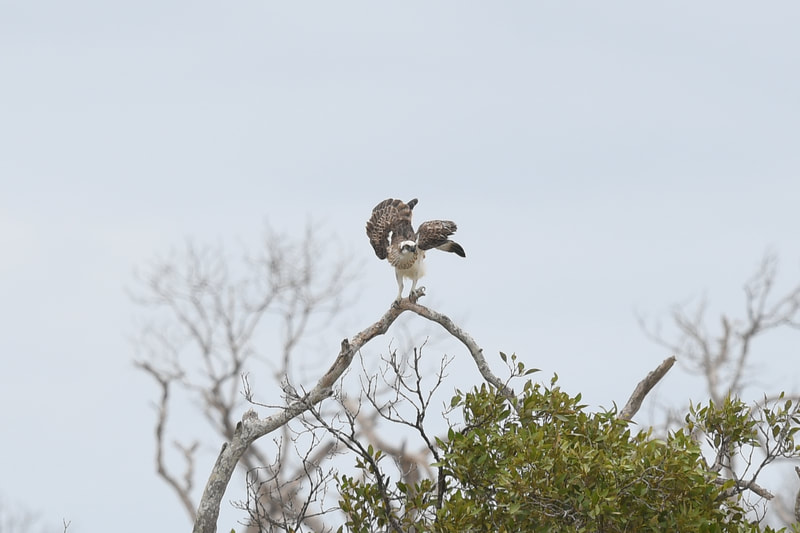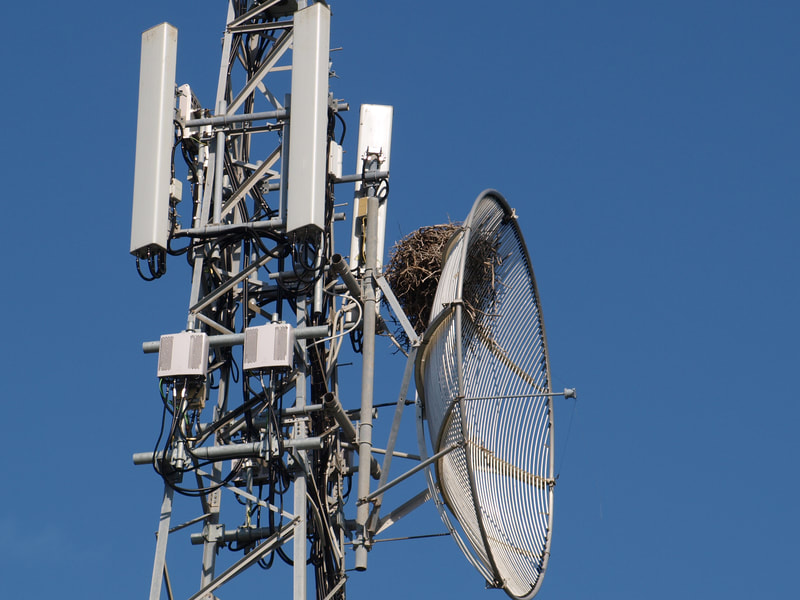The Osprey are a conspicuous bird around Tea Gardens/Hawks Nest. They can be seen hunting, resting, eating and nesting on high perches overlooking the waterways around the towns.
When you see an Osprey perched and resting they appear hunched and have a dark brown back. They have a white head with a distinctive brown band over their eye that looks like a mask. Females are larger and have a brown streaked collar extending on to their chest. Juveniles also have mottling on their chest. Males are smaller and mostly white underneath. Like hawks and eagles they have a large hooked bill and strong clawed feet.
|
In the air they differ from eagles by having bowed wings when soaring, while the eagle’s wings are upswept. Other raptors in the region with white heads and chests lack the brown mask across the eye. The White-bellied Sea-eagle is much bigger. The adult Brahminy Kite has chestnut brown back rather than dark brown. Immature birds of a similar size might be a bit tricky to determine but the eye stripe is a good indicator. Osprey nests are a massive collection of sticks and driftwood that nesting pairs build on over years. The communication tower that can be seen from the main road coming through Tea Gardens ( on the right hand side heading toward the bridge) has a large nest that has raised generations of chicks. Another can be seen from the water on the navigation tower to the south of Corrie Island. |
|
Osprey catch quite large fish around 15 to 30 cm long. When they spot a likely prey they hover for a fraction of a second before diving and grasping the fish with their feet. With amazing strength they launch vertically into the air shaking water from their feathers with the fish carried behind them. They then pull the fish up under their body and turn it around to face head-first where it is most streamlined to carry to a nearby perch or nest. They tear off chunks of meat with their large bill to eat or feed to young chicks
|
Osprey are easily and regularly seen perched on the lights going over the Singing Bridge or opposite the swimming pool either resting or looking out for prey. Around low tides you can find them fishing in the waters under the bridge, in Swan Bay, the Lagoon at Winda Woppa and in the shallows around the river mouth. It is quite common to see them on the cross piece of an electricity pole in town or on a bare branch along a waterway eating a fish. They quite like the tallest pine trees for a lookout or nest. They are active during the day and rest at night.
|
Threats to the Osprey include removal of tall trees, removal of waterfront vegetation, overfishing (particularly of the sizes they prefer), water pollution and turbidity, eating contaminated fish (with fishing tackle or plastics) and disturbance of nests. In NSW they are listed as Vulnerable.
We can help by:
- protecting coastal vegetation,
- preventing run-off into waterways,
- protecting nest sites,
- not returning fish with tackle attached to the water ,
- being conservative with the consumption and disposal of plastics.
Source: CSIRO Australian Bird Guide
Photos and text by Sharon Taylor
Photos and text by Sharon Taylor







